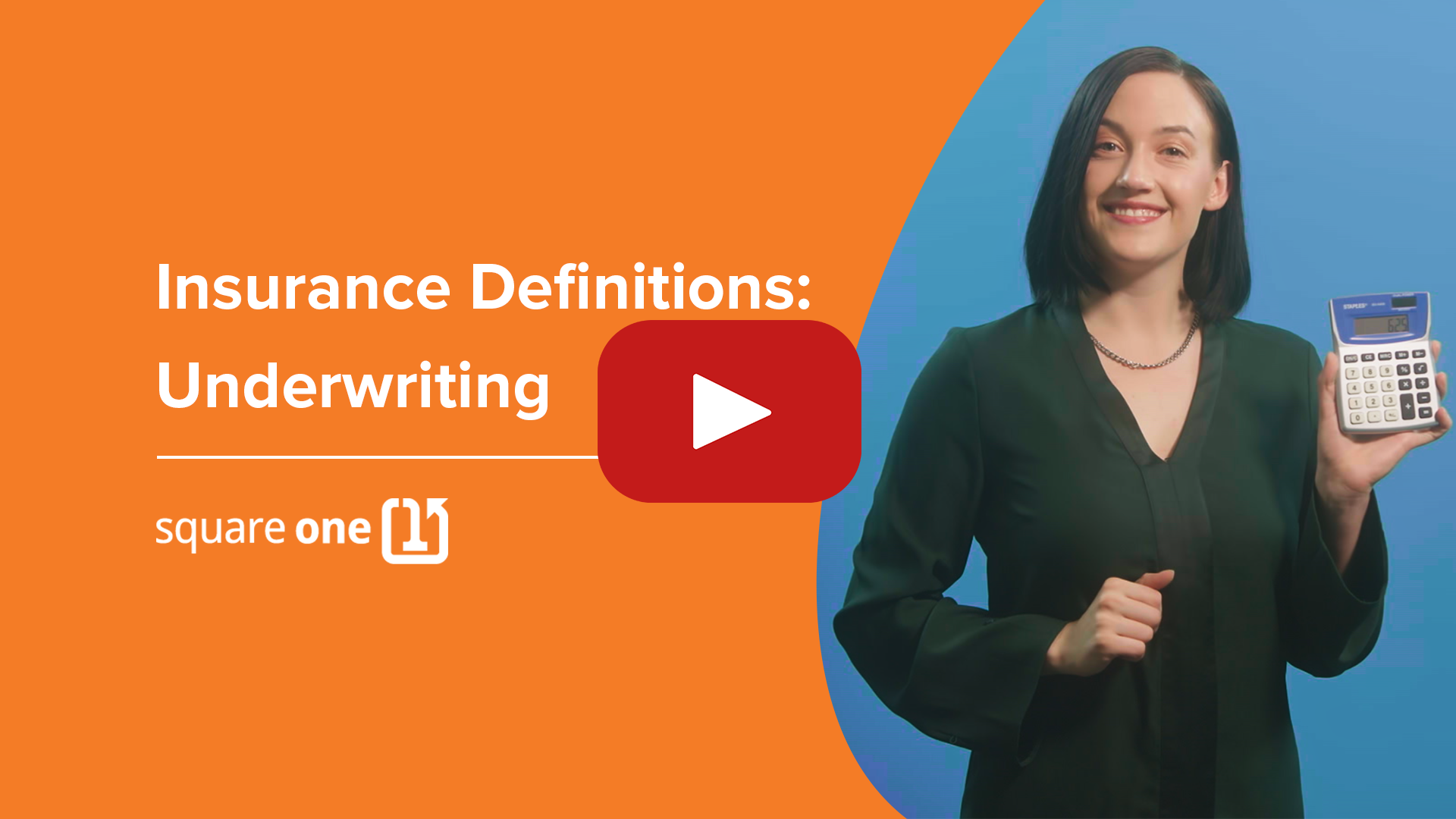The important points
- Underwriting is the function within insurance companies that decides which risks the company is willing to take and which they’d rather not.
- The underwriting department develops the insurer’s underwriting guidelines, which describe what sorts of risks they want to take.
- Underwriting reviews insurance applications from customers (where necessary) to decide if that customer is a good match for the insurance company.
What is insurance underwriting?
The underwriting department of an insurance company decides which risks the company should take, and how much money they need to charge for those risks to be worthwhile. Insurance companies, after all, are essentially in the business of taking calculated risks.
Each new insurance policy an insurer sells represents a new risk.
Upon issuing a new policy to a customer, the insurance company must pay all claims that customer makes, within the scope of the policy’s coverage. That’s why it’s called a risk: if the insurance company pays one customer more in claim settlements than they collected in premium payments, the company has lost money. That’s normal and unavoidable in many cases; helping customers cover major and unexpected losses is the whole point of insurance, after all.
However, if it happens too often, eventually the company will run out of money (due to a poor loss ratio) and go out of business. That’s why underwriting exists: to help the company take the right kinds of risks, and make sure they’re earning enough money to cover the risks that they do take.
The term underwriter can refer to the underwriting department within an insurance company, or to a company as a whole. Underwriter can also refer to a person working in the underwriting department. The underwriting company on an insurance policy is the one accepting the risk and agreeing to pay any claims that arise. For example, The Mutual Fire Insurance Company of British Columbia underwrites home insurance policies sold by Square One, while Zurich Insurance Company Ltd. underwrites car insurance policies. Many large insurance companies are their own underwriters.
How does insurance underwriting work?
The underwriting department decides which risks the company should take, and how much it needs to charge in exchange for those risks. But they don’t make arbitrary decisions on every single application for insurance they receive. Instead, insurers develop underwriting guidelines. The underwriting guidelines are general characteristics they want to see in the risks they take that help them determine whether those risks are appropriate.
In home insurance, for example, the insurance company’s underwriting guidelines would specify which types of homes the company wants to insure. Any home that falls within the guidelines will be no problem to insure. Every insurance provider has their own underwriting guidelines. However, there are a few common factors that almost any home insurance underwriter will feature in their guidelines:
Age, location, and construction of the insured home. Underwriters may determine that homes older than 50-60 years are too risky. Their guidelines may exclude homes located on known floodplains, or condos located in specific buildings with known water issues. Factors like these (and hundreds of others) help underwriters avoid insuring too many homes at high risk of suffering losses.
Home features and systems. Underwriters may exclude homes with outdated systems like knob and tube wiring or Poly-B plumbing. Oil heating tanks and wood stoves increase risk as well, so homes with such systems often fall outside underwriting guidelines.
Liability concerns. Since home insurance policies cover personal and premises liability, the underwriter also looks at things that might lead to a lawsuit against the customer. Front steps without railings, old balconies with rotting floorboards, or dogs with a history of aggression are all features of a home that an underwriter might consider too risky.
If a home falls outside the underwriting guidelines, it doesn’t mean the insurance application gets denied automatically. Instead, underwriting can review the application and consider whether they might want to work with the applicant to insure their home. For example, an insurance company might not want to insure homes on floodplains. However, they might consider doing so if a home is otherwise a perfect fit for their guidelines. They could address the flood risk by imposing a higher flood deductible on the policy, or by excluding flood coverage entirely. That way, they can still offer a policy and gain a new customer.
That’s not always the case, but insurers generally want to have more customers. Underwriting can often make reasonable exceptions to help build a larger portfolio of business.
Looking for another insurance definition? Look it up in The Insurance Glossary, home to dozens of easy-to-follow definitions for the most common insurance terms. Or, get an online quote in under 5 minutes and find out how affordable personalized home insurance can be.
About the expert: Daniel Mirkovic
A co-founder of Square One with 25 years of experience in the insurance industry, Daniel was previously vice president of the insurance and travel divisions at the British Columbia Automobile Association. Daniel has a bachelor of commerce and a Master of Business Administration (MBA) from the Sauder School of Business at the University of British Columbia. He holds a Canadian Accredited Insurance Broker (CAIB) designation and a general insurance license level 3 in BC, Alberta, Saskatchewan, Manitoba and Ontario.
